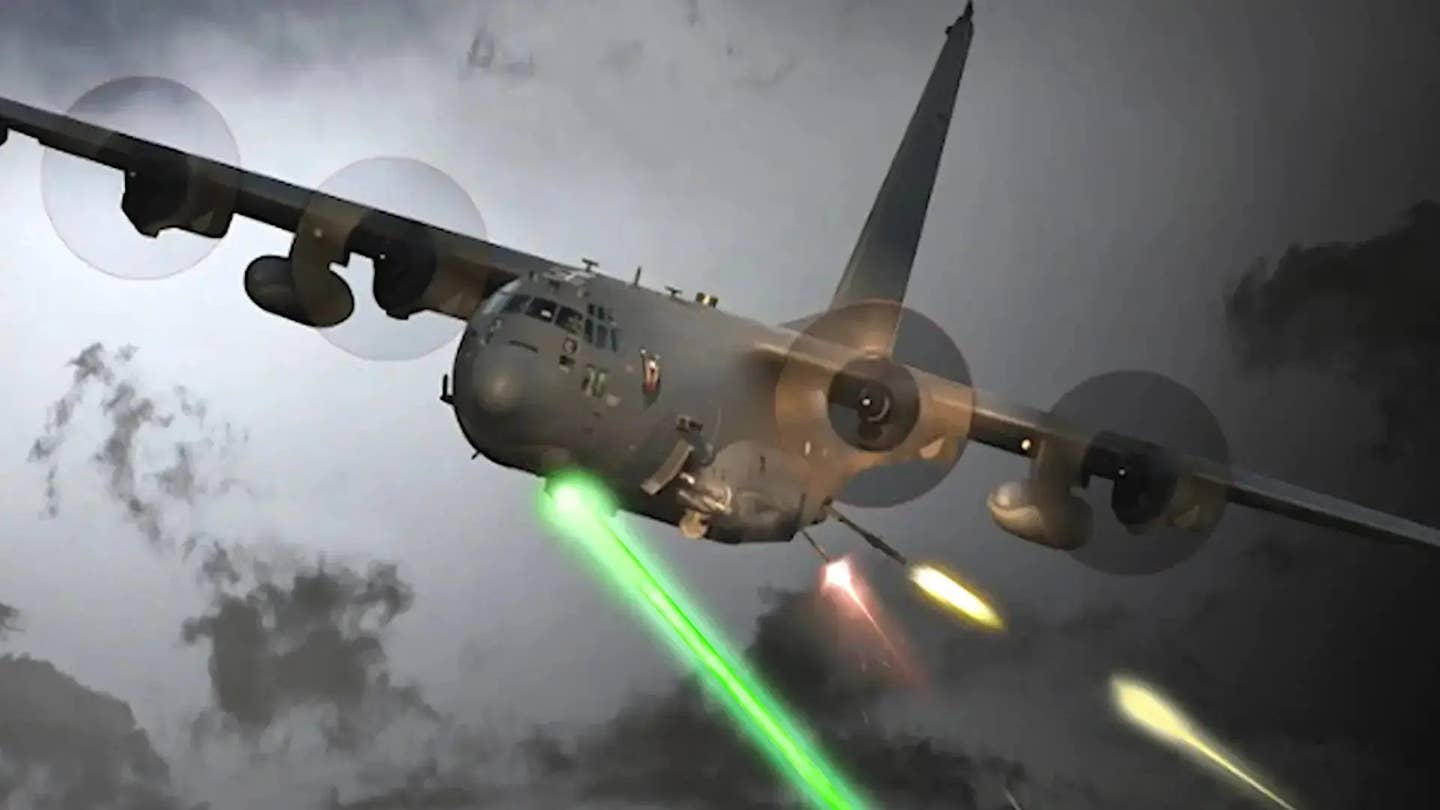After years of development and anticipation, the US Air Force’s plan to equip an AC-130J Ghostrider gunship with a high-energy laser weapon has been officially shelved. The decision resulted from insurmountable technical hurdles, marking the end of the service’s latest endeavor in airborne directed-energy systems.
Known as the Airborne High Energy Laser (AHEL) program for the AC-130J, the ambitious project had initially garnered significant attention as it aimed to become the US military’s first operational aerial laser-directed weapon.
However, Air Force Special Operations Command (AFSOC) has confirmed that there are no longer any plans to proceed with testing the prototype AHEL system on an AC-130J aircraft.
According to an AFSOC spokesman, the AHEL missed its integration and flight test window for operations from the AC-130J Ghostrider gunship during open-air ground testing.
This development can be regarded as a major setback for the service. For nearly a decade, AFSOC has pursued the ambition of installing a directed energy weapon on the AC-130J gunship.

While the Ghostrider already possesses significant firepower, featuring a Precision Strike Package comprising 30mm and 105mm cannons, as well as the capability to deploy precision-guided munitions like the GBU-39 Small Diameter Bomb, AGM-114 Hellfire missile, and AGM-176 Griffin, the addition of a high-energy laser has remained a desired but challenging objective.
Such a laser system would afford AFSOC the ability to intercept missiles or incapacitate enemy electronics, leveraging the advantage of clandestine engagement, as the laser emissions from the gunship would remain imperceptible to enemy detection.
However, originally slated for flight testing in the 2021 Fiscal Year, delays plagued the program, leading to repeated setbacks. Despite achieving key milestones, such as “significant end-to-end, high-power operation” during ground tests, the inability to meet integration and flight test deadlines forced AFSOC to reassess its approach.
As a result, AFSOC has decided to refocus efforts on ground testing to enhance operational reliability and facilitate a successful transition for potential use by other agencies.
Although the AHEL may resurface in different capacities within other US Air Force-directed energy initiatives, its deployment on a special operations gunship appears unlikely. The endeavor to mount a high-energy laser on a fixed-wing aircraft has been a long-standing pursuit for Air Force Special Operations Command, dating back to 2015.
Lockheed Martin was contracted in January 2019 to integrate and demonstrate the AHEL on an AC-130J, and the system was delivered to the Air Force in 2021. However, despite initial optimism, technical challenges have closed this chapter of airborne directed-energy systems.
Why The High-Energy Laser Weapon On An AC-130J Ghostrider Gunship?
The AFSOC has been re-evaluating the capabilities of the AC-130J Ghostrider aircraft, prompted by discussions on its potential role in future high-intensity conflicts, particularly in the Pacific region where tensions with China persist.
AC-130Js, currently tasked with providing close air support to ground-based special operations forces, operate primarily in permissive or semi-permissive environments and under cover of darkness.
In line with this strategic shift, the AHEL was designed for discreet use in complex battlefields to support special operators against critical targets such as communication nodes, light-to-medium duty vehicles, and power infrastructures. This information is gleaned from the US Special Operations Command’s fiscal 2025 budget request.
Traditionally, the AHEL has been advocated as an optimal asset for aiding missions characterized by lower-intensity counter-insurgency goals.
Former AFSOC commander Lt. Gen. Brad Webb articulated the strategic advantages of the hypothetical AHEL in 2017, stating, “Without the slightest bang, whoosh, thump, explosion or even aircraft engine hum, key targets are permanently disabled.”
This underscores the potential of the AHEL to disrupt adversaries’ communication, mobility, and infrastructure without alerting them, thereby hindering their ability to mount retaliatory intelligence, surveillance, and reconnaissance efforts.
Lasers could also induce thermal buildup, leading to the spontaneous combustion of fuel stores or munitions in a depot. This would leave no evidence of the initial trigger for the fire or explosion.
Though the 60-kilowatt AHEL laser would have lacked the power needed to burn down cruise missiles in a timely fashion, it could also conceivably be used to burn down drones without resorting to expending anti-aircraft missiles that cost hundreds of thousands of dollars each.
Mounting a laser system on a gunship, such as the AHEL, would not have marked the US military’s first foray into laser technology on fixed-wing aircraft.
In 2010, the Air Force’s Boeing 747-based Airborne Laser Testbed achieved a major milestone by successfully intercepting a ballistic missile during a test conducted off the coast of California.
Despite the potential demonstrated by such technology, it seems that funding constraints have dashed hopes of realizing Lt. Gen. Brad Webb’s vision for the AHEL.
According to budget documents from the US Special Operations Command, funding for the AHEL has been completely removed from the command’s fiscal 2025 budget request. This marks a stark decline from the $3 million allocated in fiscal 2024 and the substantial $15.387 million requested in fiscal 2023.
As for the future of the AHEL’s technological advancements, it remains uncertain how they will be integrated into other laser weapons systems. AFSOC has hinted at a “successful hand-off for use by other agencies,” but the specifics are unclear.
One potential avenue for utilizing these advancements is the Self-Protect High-Energy Laser Demonstrator (SHiELD) program, which aims to equip fighter jets with laser systems capable of neutralizing incoming missiles.
However, the SHiELD program has faced setbacks, including technical challenges and delays exacerbated by the COVID-19 pandemic. Testing for the SHiELD system is now anticipated to commence sometime in 2024.
Beyond SHiELD, the Air Force is actively exploring other directed energy weapon programs, including those designed for base defense applications on the ground. Additionally, classified efforts tied to the broader Next-Generation Air Dominance (NGAD) initiative are underway.
- Contact the author at ashishmichel(at)gmail.com
- Follow EurAsian Times on Google News